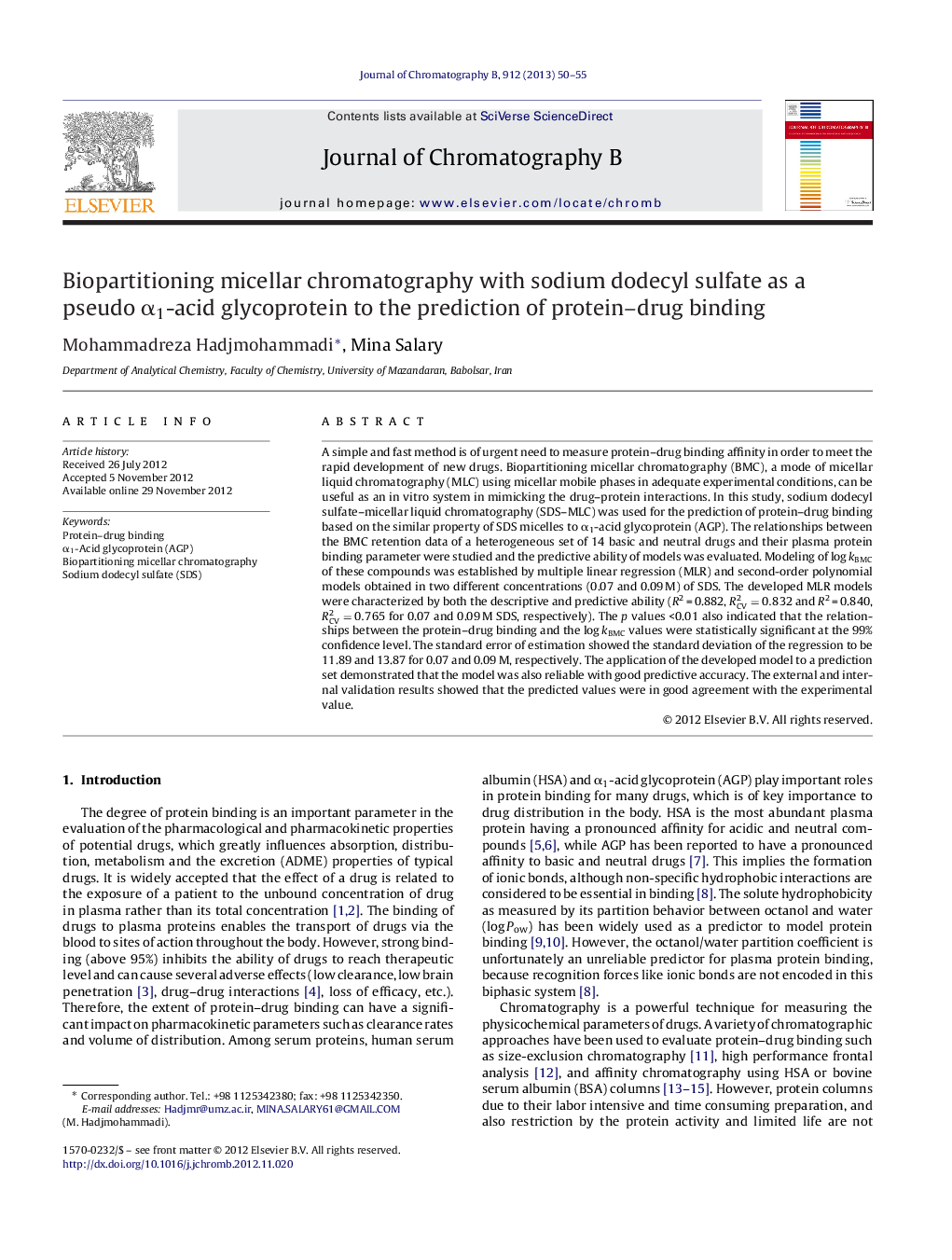| Article ID | Journal | Published Year | Pages | File Type |
|---|---|---|---|---|
| 1213617 | Journal of Chromatography B | 2013 | 6 Pages |
A simple and fast method is of urgent need to measure protein–drug binding affinity in order to meet the rapid development of new drugs. Biopartitioning micellar chromatography (BMC), a mode of micellar liquid chromatography (MLC) using micellar mobile phases in adequate experimental conditions, can be useful as an in vitro system in mimicking the drug–protein interactions. In this study, sodium dodecyl sulfate–micellar liquid chromatography (SDS–MLC) was used for the prediction of protein–drug binding based on the similar property of SDS micelles to α1-acid glycoprotein (AGP). The relationships between the BMC retention data of a heterogeneous set of 14 basic and neutral drugs and their plasma protein binding parameter were studied and the predictive ability of models was evaluated. Modeling of log kBMC of these compounds was established by multiple linear regression (MLR) and second-order polynomial models obtained in two different concentrations (0.07 and 0.09 M) of SDS. The developed MLR models were characterized by both the descriptive and predictive ability (R2 = 0.882, RCV2=0.832 and R2 = 0.840, RCV2=0.765 for 0.07 and 0.09 M SDS, respectively). The p values <0.01 also indicated that the relationships between the protein–drug binding and the log kBMC values were statistically significant at the 99% confidence level. The standard error of estimation showed the standard deviation of the regression to be 11.89 and 13.87 for 0.07 and 0.09 M, respectively. The application of the developed model to a prediction set demonstrated that the model was also reliable with good predictive accuracy. The external and internal validation results showed that the predicted values were in good agreement with the experimental value.
► BMC methodology as an early predictor of protein–drug binding. ► Ability of SDS to form a bio-mimetic protein similar to α1-acid glycoprotein. ► Usefulness of SDS in BMC for predicting protein binding of basic and neutral drugs.
